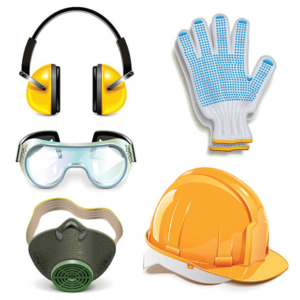 We are back with yet another interesting topic in Material Handling – Safety. Our previous article “Labor Issues in Material Handling” threw light on the labor problems faced by manufacturing industries in material handling, from the trouble finding skilled labor to loss in productivity and efficiency affecting the end product. One of the most important issues that we discussed quite in brief was about labor safety. How about diving deeper into the topic in today’s article?
We are back with yet another interesting topic in Material Handling – Safety. Our previous article “Labor Issues in Material Handling” threw light on the labor problems faced by manufacturing industries in material handling, from the trouble finding skilled labor to loss in productivity and efficiency affecting the end product. One of the most important issues that we discussed quite in brief was about labor safety. How about diving deeper into the topic in today’s article?
Labor safety is of supreme importance in all the processes that are followed in a manufacturing company. Material handling is no exception to this as these workers have to handle heavy material and work with equipment like forklifts, cranes, conveyor belts and hence are prone to workplace accidents.
In order to avoid such incidents there are numerous safety practices followed throughout the process. Let us look at the main reasons behind accidents and safety measures, which are or rather should be followed to avoid them.
- As we have been stressing since our first article, forklift accidents are the most common and serious among all the workplace incidents. These monsters are responsible for around 25% of the shop floor transport injuries. According to studies, three most common type of injuries occur when workers are struck or crushed by a forklift, workers fall from a forklift or a forklift overturns. How many times have we seen videos on WhatsApp and YouTube saying funny forklift fails wherein the forklift overturns or hits a stack of stored material or even a person? It is time we realize that this is not a laughing matter, but a serious safety hazard. Such accidents also occur because of other transportation vehicles.To avoid such accidents, the workers are trained to operate forklifts and industrial vehicles. It is also mandatory in some countries to refresh the training periodically to improve skills. Workers are also expected to follow a set of rules for safe vehicle operation. For example, before moving the forklift, an operator should always make sure that it is not overloaded and the load is arranged properly.

- Conveyor belts would rank second when it comes to injuries. Improper safety precautions and ill functioning equipment can lead to conveyor belt accidents resulting into serious injuries, amputations or fatalities. Injuries most commonly occur when workers come in contact with the moving parts and get caught in the machinery.Guardrails are placed around the conveyor belts to protect the workers from getting caught. Safety gear although necessary for everyone on the shop floor, is imperative for the conveyor belt operators. Protection gear like helmets, boots, gloves, safety goggles, shields, visors are given to workers to safeguard them.
- Statistics show that falls from height are the third highest cause of workplace injuries. The scariest accidents occur when workers fall from the stairs or slip from a high platform. Accidents also occur because of improperly stacked material falling on workers.Proper harnesses and fall arrest devices are given to workers for stacking or transporting material on heights, which reduce the number of accidents. Special confined spaces are designed for high storage to prevent it from falling.
- Improper maintenance of vehicles and poor condition of machinery make them susceptible to failures, thus creating unsafe work environment. The machinery used for material handling should always be in proper condition by performing regular service checks. Workers should immediately report any damage to the equipment to their supervisors so that necessary preventive or corrective action can be taken.
Despite following all the safety rules, maintaining the machinery in right condition, accidents still occur in material handling. Wondering why this still happens? We keep forgetting that human conduct is an extremely crucial factor, which cannot be neglected. Stress, fatigue, negligence, carelessness, work related pressures, personal issues cause distractions leading to mishaps which cannot be escaped by any amount of training.
Manual material handling is not only the most common cause of material handling accidents but also one of the highest contributor to workplace injuries in general, risking the safety of employees. Minimum manual interference is the key to reduce such hazardous incidents and improve the overall safety of the company. Do you agree?


